Nothing Ventured, Nothing Gained (Businesses)
Royal Hotel, Arkona: This building burned in 1924. It is the 2008 site of Home Hardware. Courtesy W Dunlop.
by Noreen Croxford, Becky Hollingsworth, Gerry Pierce, and Glenn Stott
With the coming of settlement in , the first business people of the area were the First Nations people who traded meat, furs, equipment and food to the earliest settlers who were totally unprepared for the wilderness life of . In exchange, the settlers provided accommodation, shelter, warmth, and, in some cases, medical assistance.
Accommodation, in the form of hotels, taverns, inns or settlers' homes, was the first European business in . William Burwell's tavern, established as a public house in Village in 1834, was also used for social gatherings, refreshment, church services and civic gatherings for several years. Other similar hotels were established along the Egremont Rd., as it was used frequently by travellers, preachers, soldiers and business people who made their way between London and Errol and later Port Sarnia.
Blacksmithing was also a major enterprise in early , with a smithy being established in Village in the 1840s by Thomas Hay. As farming, transportation and technology progressed, blacksmith shops gave way to metal fabrication shops, and eventually to foundries and factories. Thomas Doherty established his agricultural manufacturing business in Watford in 1875. From the 1850s to 1940s had its share of many of these businesses. The business directories are filled with advertisements by manufacturers of the latest farm equipment or vehicles.
For the first several decades, however, agriculture was the major driving agent for businesses in . Grist and saw mills, whether powered by water or steam, were vital to the success of agriculture.There were several located in and around Village, at Gardner's Clearing, and in Arkona, including Auld's Mill.
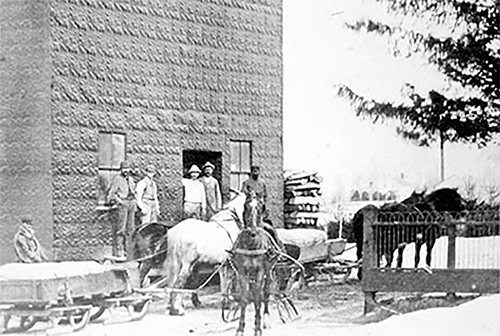
Dunlop Mill, Arkona: This mill was steam-powered. Courtesy W Dunlop.
The General Store developed to serve the needs of the local people. In these general stores, located on corners of side roads and concession roads, the merchants dispersed everything from seed to boots to canned goods. Birnam and Wisbeach were common shopping places. Village has one of the few of these gems still operating in Ontario. Often the General Store also housed the post office and was the stagecoach stop.
Along with the tavern and general store, post offices and mills were places where the local population could meet, socialize and find out the latest information, at a time when most communication still relied on word of mouth and the weekly newspaper. With the development of rural mail delivery in 1908, however, the rural post office disappeared.
In Warwick Twp. the first real “business” breakthrough came with the arrival of the railways in 1854 and 1859, the Great Western in the southern part of the township and the Grand Trunk to the north. Places such as Saunder's Corners, Wisbeach and Birnam, which had prospered early in Warwick's history, dwindled and all but died because they were not part of the railway route. Communities like Watford and Forest evolved and flourished as businesses flocked to them during the railroad boom of the 1850s to 1880s. Cartage businesses, hotels, mercantile stores, restaurants, department stores, barbershops and countless other service providers grew in these communities. Still others, such as Village and Arkona, although they didn't die, had to reduce their growth and economic expectations. Village's dream of being the county seat disappeared.
With the discovery and development of oil in nearby Petrolia and Oil Springs, related businesses in developed. Railway travel increased the speed of communication and commerce. Roads slowly evolved and became more significant to the economic development of communities. Roads like the Egremont Road, Churchill Line, Confederation
Line and Townsend Line all represented key travel routes for enterprise. North-south routes were less significant at first, as Ontario's commercial routes went east to west. In 1846, Arthur Kingstone saw the importance of creating a direct connection to Sarnia and used his influence to have the London-Sarnia Road built west from . Later he used this road to export salt from his Elarton Salt Works.
In all of these commercial enterprises, was in the middle and not liable to prosper as much as termini such as Sarnia, Petrolia or London. Nevertheless, its position offered opportunities for service businesses to develop. continued to provide accommodation, blacksmith facilities, restaurants, and other services required for comfortable travel along the Egremont Rd.
The natural environment was a key to many business enterprises. Oil wells in neighbouring townships had direct effects on businesses. In parts of the township other property owners also drilled for oil; one of these landowners, Arthur Kingstone, developed his salt works as a consequence of his search.
The Village of Warwick Alphabetical List of Professions, Trades etc. 1851
Carroll, Hamilton M. general merchant, dealer in dry
goods, groceries, hardware,
crockery etc. and postmaster
Auld, John blacksmith
Burwell, Charles carpenter
Duncan, P. inspector of licenses
Elliott, F. clerk of division court
Evans, Richard inspector of licenses
Frazer, Rev. John United Presbyterian
Hay, Thomas blacksmith
Jones [Janes], Charles hotelkeeper
Johnson, John waggonmaker
Mackenzie, Rev. Mr. Church of England
McDonald, John teacher of common school
McLay, John inspector of licenses
Mallin, W. general merchant
Mannely, James boot and shoemaker
Odel, C. innkeeper
Read, Peter tailor
Tanner, John land agent
Turner, George general merchant
SOURCE: Robert W. S. Mackay ed., The Canada Directory, Lovell, 1851
With the development of the road systems throughout Ontario following World War I, gravel pits became an important resource. Due to the rich glacial deposits which were to be found in , numerous gravel pits were opened and mined. Even today these provide a valuable resource for many of the businesses related to the aggregate industry, including those which mine, process and transport the products across the province. Birnam Aggregates and McKenzie-Henderson Trucking are prime examples.
The presence of clay suitable for tile and bricks led to the development of tile yards in Twp. The manufacture of tile and the making of brick was an undertaking synonymous with this township for many years. The nature of 's landscape and the need to drain its fields led to the expansion of the tile industry, especially when the provincial government offered financial assistance. When roads were being named in the township in the 1990s, Brickyard Line was very appropriately titled because of the Auld-Janes and later McCormick Brick and Tile Yards which had been on that road.
Another natural resource which possesses may be considered either a liability or an asset. The deep clay soil and underpan which covers much of Twp. was a major factor which led to the development of the landfill site by the Waste Management of Canada Corporation just northeast of Watford. The future overall effects of this site cannot be estimated at this time.
Elarton Salt Works, Kingscourt: When drilling for oil a bed of pure salt was discovered at 1328 feet. Courtesy L Goodhill.
Economic conditions in the rest of the world also played an important part in the business development of . Initially, the farms of were mostly subsistent in nature, with very little to sell to the immediate community or abroad. With the increase in clearings, development of farming equipment, improvement in processes and better transportation, the export of surplus products became more feasible. At the same time, with the Crimean War of 1854–1856, Great Britain's source of wheat in the Ukraine disappeared, leading to an increased demand for grain. In Canada West (Upper Canada 1792- 1841), including , wheat prices rose, making the sale of grain by the farmer very lucrative and leading to a small economic boom. As grain prices rose, land prices rose, and many farmers prospered. This led to an increase in farm sizes and new modern buildings. New businesses serving these developments sprang up. Lumber milling, metal fabrication, and wagon and equipment makers became features of the Township of 's landscape.
Inland Aggregates pit, Townsend Line east of Arkona: The dragline removes a clay layer to expose sand and gravel deposits. Courtesy P Jensen.
A similar but perhaps more significant set of circumstances arose during the American Civil War (1861–1865). Grain and livestock prices soared as the United States required those commodities to feed their armies. Many of the farmhouses and barns still standing in originated from these prosperous years.
Other world events also made an impact on , not always in a positive vein. Depressions which came and went throughout the nineteenth century plagued as well. World War I and World War II caused differing problems for businesses, as well as opportunities, with the necessity of manufacturing or producing martial goods. During the war years the shortage of workers in and throughout the nation stimulated the need for women in the workplace. Traditional positions such as tellers, bankers, telephone operators, factory workers, secretaries and sales clerks, which before World War I were the domain of men and boys, were by necessity taken over successfully by the female sector of the population. As a result, women in took an active role in all forms of business.
The Great Depression of the 1930s had a major impact, not only on agriculture but on all forms of business. Many farms and businesses went bankrupt as a result of the depression and the two world wars.
Technological developments also promoted businesses. Telegraph lines followed the railways and, as a result, telegraph offices were established in the railroad centres such as Watford, Kingscourt, and Forest. By the 1880s, telephone lines were beginning to make their way into rural parts of Ontario, and Twp. was no exception. Communication, which we take for granted today, began to improve. Indeed, with railroads and the stagecoaches which served them, mail which would have taken weeks to arrive in former times would take mere hours. Sometimes a person sending a letter from Watford to Toronto would have a reply letter back in Watford the same evening!
Hand in hand with the improvement of roads came improvements to vehicles. Buggies became lighter and modified suspensions made travel more comfortable. Railways were considered the best and fastest mode of transportation, although also the most expensive. Stagecoach routes developed not only along the Egremont Rd., but also connecting communities such as Arkona and Birnam to Watford, allowing these communities to take advantage of railway travel. As railroad travel became more convenient and available, stagecoaches gradually were reduced from their role on main routes to providing shuttle service to and from railway stations. They were no longer required for longer routes from London to Sarnia but picked up shorter, conveying routes such as ferrying passengers from Arkona to the Watford station or to the Forest station.
In the early 1900s stagecoaches were replaced by buses and horse-powered vehicles by automobiles. Following World War I buses also reduced the importance of trains. This led to the development of businesses related to the automobile. Among these were the gas station, car repair garage and tire shops, all of which were essential parts of motorized travel. Motels, cabins, and motor lodges replaced the hotels of the nineteenth century. Restaurants, gift shops, and tourist businesses catered to the “new” traveller who shunned railroads and used the new “highways” which were gradually taking shape in Ontario.
Hand in hand with the development of motorized travel, agriculture began to accept technological change. Motorized equipment began to take over the work done by hand or by horse-drawn equipment. Farmers found that with a gasoline-powered tractor, they could plow many times the acreage that a team of horses could do. The 1920s to 1940s saw a slow development of motorized agriculture, which came into its own after World War II. The increased reliance on tractors and motorized farm equipment also led to the development of farm equipment dealerships, of which had many. Arkona Machine Shop, Saunders Farm Equipment, Delta (Forest Farm) Equipment, and Hawkens Farm Equipment are a few present-day examples.
Blain’s Corners (later Marilyn’s Corner). Th e Red and White grocery store, egg-grading station and locker service were built by the Bill Blain family in the late 1930s on the southeast corner of Forest Rd. and London Line. In the 1950s the business was purchased by Mel and Blanche Williamson. Courtesy S McKay.
Over the past twenty years the amalgamation of manufacturing and business has reduced the number of farm equipment manufacturers and agricultural product services. In turn this has had a major impact on farm businesses. The number of farm-related businesses has decreased as the size of farming operations has increased. In we have witnessed the demise of formerly family-owned and operated farm service businesses such as Arkona Feed Mills. We have also seen businesses such as Fred Brown Seeds taken over by larger operations such as Cargill.
The Egremont Rd., later to become Hwy 22 and Hwy 7, was for years a major truck route between London and Sarnia. With the building of Hwy 402 in the 1970s, the volume of traffic on the Egremont Rd. was reduced, and related businesses suffered in the same way as they did after the building of the railroad. Restaurants, cabins, motels, garages, and other travel-related businesses found along its route either changed their focus or disappeared.
In the same way as agriculture and transportation changed with the times, the service industries also did. For example, pioneers made most of their own clothing, including the fabric from which clothing was made. Cobblers came to people's homes to make their shoes. Then cobblers opened their own shops and people came to them instead. Millinery shops opened in the latter 1800s. Once industrialization and mass production came into effect, more and more of the individual shops became department stores, and individual craftspeople were no longer needed in smaller communities.
Contemporary businesses require a large volume of sales to remain viable and the consumer now demands a wide choice in goods that only larger stores can offer. Good roads and reliable vehicles now allow consumers to travel conveniently beyond Twp. to do their shopping. Many citizens of the township work beyond the township boundaries, so that shopping out of town before coming home, has often become more convenient. The result is an obvious decrease in smaller businesses serving . The businesses in Twp. and its nearby neighbours provide a personalized service that is not normally expected in the larger centres. These businesses continue to serve the community well.
An Overview of Business Activity in Warwick
Following are some businesses that have existed or still do exist in Twp. The list is representative, not exhaustive, and gives an overview of the economic life of the community. Detailed information about these businesses may be found in the Township Archives.
Acton's Service Centre
Acton's Service Centre was opened by Ken Acton in 1976 on the corner of Nauvoo Rd. and Erie St. in Watford. Two years later extensive renovations added new storage space, and in 1979 another expansion took place. This addition required the demolition of one of the oldest buildings in Watford, at 229 Main St. It provided for a tractor tire warehouse and machine shop. Soon tire shredding equipment was added.
In 2005 the company moved to their present location in the former Wallis Motors property at the corner of Nauvoo Rd. and Simcoe St., where they are still primarily in the business of tire sales and service. The company is now co-owned by Ken and his son Mike.
Androck
The manufacturing of wire products began in the village of Watford in 1906, when the Thompson Wire Co. began producing bedsprings, wire mats and signs. The company ran into financial problems and had to close in 1910. The property was taken over by the village of Watford and council advertised for a company to operate the plant. At about the same time, Charles and Arthur Andrews of Rockford, Illinois, proprietors of Andrews Wire and Iron Works, acquired the patents on a square bread toaster. Canadian patent law required that the toaster be produced in Canada to be sold in Canada no later than two years from the date of patent issue. It was at this same time the Andrews Bros. received a circular in the mail advertising the availability of a vacant factory in the village of Watford.
Andrews Wireworks, Watford: Th e Andrews Bros. of Illinois purchased the plant in 1911 to produce a square toaster. Th e plant, later known as Androck, produced a variety of products until 2006. Courtesy Watford Historical Society.
Charles and Arthur Andrews came to Watford to inspect, then purchase the factory. In the first few years, the Andrews Bros. wished they had never heard of Watford. The company lost money. Sales were hard to get, and by 1913 the Watford plant had become such a burden that the elder Andrews sent Charles Jr. to Watford with instructions to “wind up the business, close the plant, and throw away the key.” However, for some reason, Charles Andrews decided that the plant should be given one more year's trial.
That same year, a pesky little fly, a particular nuisance to horses and cattle as it bit them about the nose and mouth causing great pain and discomfort, became the salvation of the company. Farmers tried protecting their livestock with burlap bags over the muzzle but this proved to be too hot. Then a crude muzzle made of wire cloth was devised. Farmers were surveyed to find the best type of mesh and samples were made for approval. Soon, the first lots of nose guards were shipped from the plant. The item was a success! The steady volume of profitable nose guard orders saved the day for the Watford factory.
Other “Androck” lines were soon developed: tools, stamped and wire bathroom accessories, housewares, grass catchers, bicycle baskets and brightwire (polished) hardware. With the eventual decline in nose guard sales, the houseware lines became the main products and the plant continued to prosper. In the 1950s, with outdoor barbecuing gaining in public favour, a successful line of barbecue tools and accessories was developed. The original 1910 plant was replaced by a one-storey building occupying over 80,000 square feet.
Andrews Wire Works changed owners numerous times. It later became known as Androck. In 2006 the plant was closed by Newell Industries of Illinois.
The Lambton Heritage Museum has the following poem, read at the Andrews Wire Works Annual Picnic in 1920, in its collection.
How dear to our hearts is the good old name Androck
This name guarantees all the goods that we make.
The best grade of wire goods now has “Androck” trademark
We make wares enough to fill up Noah's Ark.
We make good fly-swatters for busy fly-spotters,
We also make baskets to carry them off.
We've got good egg-beaters, nose-guards and soap-savers
We also make muzzles to put on a calf.
The old “Androck” trademark is our guarantee name,
The goods labeled “Androck” are rising to fame.
Our Manager Bate has his eye on the wire-worm,
No wire firm on earth our business can eat.
Our superintendent makes us independent,
Our Miller is grinding the finest of wheat.
We've got good bread-toasters, also pop corn roasters,
Skirt hangers, the best you can find on the map.
Wire forks and cake-mixers, Aunt Dinah's Sink Strainer
First-class trouser-hangers and also flytraps.
The old “Androck” trademark is our guarantee name,
The goods labeled “Androck” are rising to fame.
The “Androck” employees are up to their business,
They work for themselves and they work for the firm;
They're hustling and bustling, they're never found shirking,
The more goods turned out means the more cash they earn.
We all work together in all kinds of weather,
We're out for the business, we're getting it too,
We mean to grow bigger, that's what we all figure,
So let's stick together and this will come true.
The old “Androck” trademark is our guarantee name,
The goods labelled “Androck” are rising to fame.
Author unknown
Bank of Montreal
The Bank of Montreal opened January 12, 1899, at the corner of Huron St. and Main (Nauvoo Rd.) in Watford. The first manager was F. A. Mann. The services at the bank included basic banking services.
Extensive alterations were completed in 1960, including an “around the clock” depository unit. In 1993 the bank had a “facelift” to the interior of the building, and in 1996 a new automated banking machine was installed in the front entry of the building.
Merchants Bank (Bank of Montreal in 2008), Watford. Courtesy D Hollingsworth.
Barb Manufacturing
Barb Manufacturing is located at 6809 Egremont Rd., just west of Village. It has been open since 1980. Barb Tomlinson and her husband George specialize in repairs to tents, awnings, tarps, seams, zippers, grommets, windows, screens, snaps and holes on trailers, boats, trucks and campers. This business first began as a hobby but quickly changed after Barb realized that no-one else in the area does this kind of work. Barb prides herself in a job well done. Her customer base is widespread, including Kincardine, Toronto, Wallaceburg, Michigan, as well as Lambton County.
Bear Creek Woodcraft & Cabinets
Tom Pembleton has operated Bear Creek Woodcraft & Cabinets from his home on London Line in Village since 1977. He started by making wooden lawn ornaments, then expanded into home renovations. He continues doing renovations, but now specializes in kitchen cabinets, bars and cedar chests.
Bebingh Insurance Limited
Edward Fisher started an insurance agency in Watford that represented Lambton Mutual. In 1982 John Bebingh bought that business and named it John Bebingh Insurance Inc.
John's son Rick took over the business in 1990, and changed the name to Bebingh Insurance Ltd. In 2004 Bebingh Insurance built a new office at 5310 Nauvoo Rd., relocating from 5277 Nauvoo Rd. Bebingh Insurance offers general insurance, including farm, home, auto, and commercial insurance through Lambton Mutual Insurance Company. They also offer financial products including Guaranteed Income Certificates (GIC) and Registered Savings Plans (RSP), mutual funds, life insurance and travel insurance. In the insurance industry there have been many changes in coverage, wording and ratings. The Bebingh office is now computer friendly, with a network of four computers. The internet has helped the insurance industry. For example, e-mail and websites are now used for sharing information.
Bert Bork Roofing & Siding Ltd.
Bert Bork founded Bert Bork Roofing & Siding Ltd from his house at 6872 Egremont Rd. in 1978. Bert specializes in roofing, siding, eavestroughing and accessories. He provides the best work ethic and service in the area.
Birnam Excavating Ltd.
In 1973, Birnam Excavating was founded. Work began in the municipal drainage field with the specialty being quicksand drainage. In 1977 the company was incorporated and became known as Birnam Excavating Ltd. The founding owners were Frank and Elsie Van Bree and Doug George. Mark Van Bree joined the company in 1977 and work expanded into the storm sewer field. Mark was interested in growing the company and expanded into the sewer, watermain and road building industries. With the addition of his wife, and now partner, Teresa, they have grown the company to about 40 employees with four work crews, truck drivers, management and support staff.
Today Mark and Teresa are the sole owners of Birnam Excavating Ltd. They have focused on providing quality and service to their customers. They believe in family principles, trust, teamwork and providing positive experiences. They try to provide a safe and happy place to work. With these values in mind they created the “Birnam Pride Principles”.
Mark is a Board member on the Ontario Sewer and Watermain Construction Association and has taken on various leadership roles in local and provincial committees to stay informed and to help the company remain vibrant and successful.
Having completed his college education in 2006, Mark and Teresa's son Kevin joined the company on a full- time basis as foreman of one of the sewer and watermain crews. In 2008, Birnam Excavating Ltd. celebrated their 35th anniversary in business. They continue to be located at
7046 Nauvoo Rd.
Bluewater Pallet
Bluewater Pallet was established on April 7, 2004. The company manufactures pallets and crates in many different shapes and sizes. Bluewater Pallet employs approximately 20 people. Currently most pallets are built either on an Italian-made automatic nailing line or by hand with air nailers. The softwood lumber, which comes from local mills throughout southwestern Ontario, is processed on a multiple head trimsaw and bandsaw cut-up line; the hardwood lumber is processed on a Brewer gangsaw. is a good place to do business because it is in a good location to supply pallets to many different businesses across Southwestern Ontario.
Bluewater Pallets, Warwick Village. Courtesy P Janes.
Previously the company was known as MacDermid Pallet and Lumber. This company was in business in from 1970–2003. Owners Don and Ray MacDermid built a variety of pallets and crates to meet customer needs. Throughout their years as owners many changes took place. When the company started, pallets were solely built using hammers, nails and pneumatic nailers.
Up until 1955 the Stock Car Raceway was owned and operated on this site by Lindley Fraser. He later sold the property to a Wallaceburg company which opened up a pallet factory in 1966. A newspaper item (source unknown) from 1966 concludes with the following statement “The plant will be called Stanton Pallets in honor of the wonder horse Dr. Stanton, whose grave is located on the grounds, complete with monument.” Doc Stanton's monument was removed in the 1970s when Lindley Fraser died.
Bork's IGA
George Bork bought Bork's IGA on July 1, 1976. This family-run grocery store was originally located on Main St. (where Watford Auto Parts is currently located) before it moved to the current location on the north of town at 5407 Nauvoo Rd. Bork's IGA is a grocery retail store. The best years of business for Borks were 1987, 1988 and 1989 because of low interest rates. The lean years were 2000 to 2005 because of the loss of businesses and industries in Watford. One change that George noticed over his years in business was the fact that customers were purchasing more fast food items because of their busy lifestyle. George and his wife Pat bought the grocery store because Watford was their hometown. The Borks sold the store in 2007, and it continues as Watford Foodland
CIRCA Antiques
In 2006 Doug Long and Siobhan Rickard decided to expand their family-run antique business. Their business was originally founded in 2001 in Strathroy, but Doug and Siobhan noticed that Nauvoo Rd. in Watford was heavily trafficked, so they decided to open another store. CIRCA Antiques is located at 5308 Nauvoo Rd. Antiques and collectibles are sold in their store, but they specialize in stoneware and hardware.
Davidson Apiaries
Clayton Davidson started the apiary business in 1920 with his brothers R. V. and Earl on Lot 25, Con. 6 SER, Twp. It has been a family business over the years. Floyd Davidson joined the business when he finished school in 1940. His son Ron took over when he retired and a few years later Ron's son Dan took over.
The “honey house” was originally Salem Methodist Church, which was situated on the corner of LaSalle Line and Salem Rd. It was moved onto the farm in 1940. At one time it belonged to an oil exploration company and was used for storage. When the oil company found no more oil it was put up for sale.
Honey is also sold wholesale to a packer. It used to be shipped in 70-pound cans; now it goes in 600-pound barrels.
In 2006 Dan built an addition to expand his business. The main products sold were honey and beeswax. Dan's business has now begun producing pollen.
There were good years and bad years over the last 87 years, just like any other farming endeavour. The weather is the main factor which influences whether one gets a good crop or not. There can be strong healthy hives, but a poor crop if the weather doesn't cooperate. If there is an early frost, it destroys part of the clover and honey is not produced. If the summer is too dry, the plants will not produce much honey.
One of the biggest changes in the business occurred when mites migrated into Ontario from the United States. Before the mites, hives seldom had to be treated, but it is now a constant battle to try to keep the mite numbers down. Treatments are applied during spring and fall, when the bees are not producing honey.
The change in farming has also changed the honey business. When Davidson's started in 1920, was cattle country and most of the land was pasture, buckwheat fields or hay fields covered with clover. In 2008 most of the land is cash crop. There is little honey in soy beans and none in corn and wheat. As a result the honey crop is only a fraction of what it used to be.
There has always been a market for honey and the price is much better than it used to be. But the cost of production has also risen drastically.
The future of the bee business is probably in pollinating crops. Things like cucumbers, other vine crops, blueberries and cranberries benefit greatly from honey bee pollination. Often the growers of these crops will rent bee hives from a beekeeper for part of the season. This has already become a big part of Davidson's business.
Selling bees is another area that will probably be a part of beekeeping in the future. This area of Canada has an early spring and bees can build up quickly. Nucs—half a hive—can be sold in the spring and a good crop will still come from what is left.
Township is a good place to do business. There are always good places to keep the bees in the area, places where the bees will produce honey and pollen. Being close to Hwy 402 makes the Davidson Apiaries easy for people to find. Davidson Apiaries is close to a couple of big packers for the bulk honey. For years the bulk honey was shipped to Toronto; in more recent years it has gone to Michigan.
There are many stories — of people being run into the field after working on an angry hive, of dropping a hive while trying to move it from one spot to another or of trucks breaking down in the middle of the night. But on average, in the past 87 years beekeeping has been a good business.
Donut & Deli
In 1990 Don Barker opened a Donut & Deli at the corner of Nauvoo Rd. and Huron St. In 2001 it was sold to Wayne Stanley and Karen Wilson. Karen and Wayne offer hot meals as well as coffee and tea to a large customer base.
Egremont Car Care
Egremont Car Care, at the east end of Village, has had many transformations over the years. At one time it was a Sunoco Service Station. Most recently the business has done auto repairs. Major renovations were done in 2004. In 2008 it is Collision Service.
5th Wheel Training Institute
In January, 2006 Yvan Chartrand and Louise Philbin purchased the former Central School property at the southwest corner of Egremont Rd. and First School Rd. They made extensive renovations to the property in order to house the Training Institute. The classrooms became on-site residences for the students. The former gymnasium was converted into offices. The 5th Wheel Training Institute is registered as a Private Career College. When students graduate, they hold certification in 10 areas of construction as multi-skilled workers.
Home Day Care
(submitted by Laurie McCormick)
My home day care business was created from a dual need — the need for childcare for local families and my desire to be home for my own children. For 23 years, I have been babysitting and providing before- and after-school care.
In 1983, I was home with my two oldest children when I was approached about looking after another family's children. By 1984 when my third child was born, I was caring for two families. The following year, I had five preschoolers and was providing daycare eleven hours a day, five days a week. This has continued over the years, with any vacancies being quickly filled without a need to advertise. Some families stayed a short time with others staying up to thirteen years. Over the years, I have provided care for well over 150 children.
The biggest changes have been brought about by a more disposable society. Drink boxes, granola bars, individual cereal bowls and packets have changed the way parents feed their children. Cloth diapers gave way to disposable diapers, a definite improvement over rinsing and sending home bags of wet diapers. Government changes have affected the age and number of children in care. Maternity leave rose from four months to a year. (The earliest I had a baby start full time was six weeks). The onset of junior kindergarten meant that four-year-olds were in school every other day. In 2006 “Best Start”, an optional day care program for junior and senior kindergarten children on the days they aren't in class, has reduced numbers again. Schools now also offer before- and after-school care.
This fall (2006) is the first time in twenty years that spaces haven't filled up. Perhaps this is my sign to retire, time will tell.
Laurie retired from operating her day care in 2007.
Hunt's Chainsaw (Kernohan Rental Sales & Services)
Maurice E. Hunt opened Hunt's Chainsaw in 1961 at 582 Front St. Larry Paige worked with him at the store. Many residents of Watford and area depended on Larry to keep their chainsaws and other small engines in working order. Other services offered included electric motor repairs. Hunt's Chainsaw closed in 1996. In 1997 Eric Kernohan bought the business, changed the name to Kernohan Rental Sales and Service, and introduced power equipment, rentals, sales and service. Eric has also maintained the services previously offered by Hunt's Chainsaw.
Janes Photo Restoration
Paul Janes began restoring photos as a hobby in 1998 when he found that commercial restorations were very expensive and the quality was often not acceptable. The first few photos took many hours or many days but, as his knowledge and skills grew, he was able to reduce the time required to minutes. As a volunteer, Paul restored over 4500 photos for this project.
JEG's
Jeff Sanders purchased the garage JEG's ( Jeff 's Everything Garage) at 5316 Nauvoo Rd., Watford, from Acton's Service Centre in September 2005. Jeff put new wood siding on the building, fixed up the back shop and added two new hoists. He opened his shop with the help of one employee, Jamie Ellis. In 2006 he hired his second full-time employee, Shawn Haslip. The three of them work well together to fix all car and tractor needs, including exhaust, oil changes, transmission, brakes, air conditioning, and much more.
J & J Hair and Beauty
J & J Hair and Beauty family hair care started as a home business in 1976 when Joanne (Berkelmans) Caris was a newlywed. She had just married Theo Caris of Twp. They lived at 6613 Bethel Rd. At the time there were few hairdressers in the area and family, friends and neighbours quickly became customers. Ann Wester was her first customer. The hairdressing room was off the dining room and since the sink was not installed yet she washed Ann's hair in her laundry room sink. At that time men's haircuts were $5 and women's wash, cut and blow dry were $10.
During the early years Joanne did hairdressing between raising four children, gathering eggs and helping with other farm work on the cash crop and chicken farm. Because her shop was in her home she could attend to her children as she worked on her customers. As the children got older they wanted more privacy, so Theo renovated their one-car garage for the hair salon.
Joanne never advertised or even put out a sign; she always had enough customers through word of mouth. In 1998 the family moved to 8078 Egremont Rd. where her husband renovated the existing two-car garage into a large hair shop. Although Joanne had always attended hair shows to acquire new knowledge and techniques, she decided to add a part-time job in a city salon, Hair Moves in Sarnia owned by Frank Hardman.
The most memorable event in her years in business was on July 4, 2003, when she had ten people, both customers and staff, in her shop. A terrible wind or microburst came up suddenly. Joanne considered sending everyone to the basement, but the storm lasted only about 15 seconds. Unfortunately the new drive shed behind their house had flown into the air. Fortunately it had not flown into the house but had landed in Tony Hogervorst's cabbage field next door. He said he had always wanted a new drive shed but not there!
Working two days a week in the city is the biggest change that Joanne has made. This brought her out beyond the ordinary hair styles. Her daughter-in-law, Jen Caris, worked for a time with Joanne, hence the “J & J”. More recently Joanne has hired one full-time and two part-time employees at her home business in Twp. where clients enjoy her personable and pleasant service.
Lambton Mutual Insurance Company
Lambton Mutual Insurance Company was founded in 1875 by a group of farmers from Lambton County who were also the first policyholders of the company. In a “mutual” company the policy holders divide the annual profits among themselves. The office was initially located at the home of W. George Willoughby in Brooke Twp. It moved to 318 Main St.,Watford, then to the corner of King and Main St. The present location is 7873 Confederation Line. Lambton Mutual's main service is property, liability and automobile insurance policies.
Lambton Mutual witnessed some lean years during the depression. Other lean years were the result of storms or normal industry cycles of loss experience. Lambton Mutual has seen insurance go from purely fire insurance to comprehensive policies and auto insurance as well.
It is interesting to note that in the early years annual reports were printed on postcards!
Libro (St. Willibrord Community Credit Union)
Father Jan VanWezel was an Associate Director of Immigration for the Roman Catholic Diocese of London. His main task was to help immigrants with the transition from Dutch to Canadian society. He was the key figure in what was to become the St. Willibrord Community Credit Union.
In 1950 a group of about 100 people held a meeting, shared their views, and at the end of the evening, 20 of them signed an application for a charter for a credit union. The seed had been planted, and in less than three months the credit union was born.
The small branch was run out of John Strybosch's home in Arkona from the 1960s until 1975, when the business moved into newly-built headquarters on Arkona Rd., just south of Arkona. The Watford office of St. Willibrord opened in 1977, with Marion Rankin as office manager and Nancy Van Gorp as the teller.
In 2006, about 55 years after it had been founded, the credit union changed its name to Libro Financial Group. At that time there were 13 branches throughout Southwestern Ontario.
The Watford Branch of Libro celebrated its 30th anniversary in 2007. Marion Rankin and Nancy (Van Gorp) Kremer are still proud to be part of the Libro family.
McClung's Flowers
In 1996 Darlene and Alan Woodfinden purchased McClung's Flowers, leaving the name of the previous owner, Bob McClung, who ran the flower shop for 16 years. McClung's Flowers offer fresh and artificial floral arrangements. They also are the agent for Sears Catalogue Store and Kell's Drycleaners.
In 1997 Water Island Canada Inc. was added. The Woodfindens are partners in this business with Jeff and Vickie Fisher. McClung's Flowers now employs a delivery man who delivers bottled water to homes and businesses.
McLaren Pharmacy
McLaren Pharmacy was first opened in Watford in the fall of 1868, or early in 1869, by William Peter McLaren. It was operated from the Medical Hall, a one-storey frame building on Main St. (Nauvoo Rd).
In 1870 the pharmacy was relocated to a newly-built two-storey brick building which was part of the McLeay Block, with the pharmacy below and an apartment above.
The pharmacy was seriously damaged in Watford's disastrous fire of 1880. The business was again struck by a fire in 1886. This time, the fire had been set by burglars to cover their tracks.
James Walker McLaren, oldest son of William Peter, took over the business in 1904, due to his father's deteriorating health. In 1917 a new glass and copper storefront was installed on the building, replacing the original wooden one. There were also some interior improvements at that time.
Following the death of James Walker in 1928, the business was operated as the J. W. McLaren Estate by Mrs. McLaren. Harold C. Crowe was pharmacist until 1938, when son James Alexander McLaren, a licensed pharmacist since 1936, returned home to take over the management. In 1950 Alex purchased the business from his mother, and it was later incorporated under the name of Alex McLaren Pharmacy Ltd.
In 1956 another new storefront was installed and extensive renovations were made inside. The work was just nicely completed when fire struck again. A defective chimney in the common wall between the pharmacy and the building to the south allowed fire to spread into the upper storey of the pharmacy building. Although there was no actual fire in the lower level, the smoke and steam damage was so extensive that the stock and fixtures were declared a total loss.The business received smoke and water damage from yet another fire in 1979 when the Roche House was destroyed by fire. Fortunately the damage from this event was not as serious as from the previous fire.
By 1984, Alex had operated the pharmacy for 46 years, with the exception of three years serving in the RCAF overseas. He sold the business to Zul Somani in 1985, who in 2000 sold it to Nilesh and Neeta Yadav, who continue to serve Watford and community in 2008.
MidTown Convenience
MidTown Convenience was originally a Dairy Case Store owned by Bob Hunter of Strathroy. Bob owned the store for 15 years before selling it to Fred Oriet and Roger Courtney in about 1986. The business was located across from the post office on the corner of Main and Ontario St. Fred and Roger changed the store name to MidTown. Three years into owning the store, Fred Oriet bought his partner out and became the sole owner. In the early 1990s Fred sold the business to Keri Cooper. When Keri bought MidTown in 2006 she moved the business to Main and Huron St., into a refurbished building, which added more room to store the returns of recyclable bottles. In January of 2008 Keri Cooper sold MidTown to Cheryl and Mike Beuerman.
Moffatt & Powell Ltd.
In 1956 Keith Moffatt and Melvin Powell purchased an existing lumber and coal business in Watford from Hiram Moffatt, Keith's father. They named the company Moffatt & Powell Ltd., and sold lumber, plywood and other building supplies, primarily to contractors. They also sold a large quantity of coal. Their first retail store was opened in 1960 on the corner of Front and Main St. This opened the market to homeowners and do-it-yourself buyers as well as contractors.
This successful store prompted the company to open its second store in Strathroy in 1967, and then a subsidiary, Watford Roof Truss Ltd., in 1972. Roof Truss builds trusses for the residential and commercial building industry in western Ontario and eastern Michigan.
1973 saw the opening of a third retail outlet in Mitchell, but 1982 was the most significant year of growth, as Moffatt & Powell amalgamated with David M. Powell Inc., a building supply company operating in Strathroy. David Powell became vice-president and general manager of the expanded Moffatt & Powell. The new company moved to a much larger location in Strathroy, where the head office was housed. At the same time, new branches were acquired in London, Exeter and Goderich. A store in Tillsonburg was opened in 1984.
In 1994 the company opened a truss manufacturing plant in Milan, Michigan, under the name Wolverine Roof Truss Ltd. In the early 1990s the Exeter and London stores were closed, but by 1996 the company returned to London, building a 30,000-square foot retail store, warehouse and head office, and quickly reclaimed a major portion of the lumber, contracting and hardware market.
In 2006 Moffatt & Powell celebrated 50 years of service.
Nana's House Child Care Centre
In September, 2001 Nana's House Child Care Centre was opened by Becky Hollingsworth. The Centre is fully licensed with the Ministry of Community and Social Services. The capacity of the Centre, with 2 or more staff working, is 16 children. Two staff work each day, as well as two additional call-in staff.
Parker's Fireside Store
When Ivan Parker opened up an egg grading station at Wisbeach in about 1938, his main concern was to supply eggs to the surrounding area. The egg grading station remained, but Ivan and his wife Evelyn branched out and opened a grocery store and
bought gas pumps. The coffee pot was always on at Parker's Fireside Store, inviting customers for a friendly visit. The Parkers sold a variety of products: cans of motor oil, garden hoses, pop, egg candlers, glass milk bottles and even a wooden root pulper used to mash food for animals.
Ivan and Evelyn Parker loading their van to deliver groceries, Wisbeach: At one time the route included 60 customers. Courtesy M Parker.
One way the Parkers got to know their neighbours was through their home delivery service. Three times a week, Ivan would deliver groceries along a route. As he dropped off one load he would pick up a list of supplies the customer wanted on his next trip. He had 60 customers along his route at one point and continued the service until 1973. The home delivery was one of the few left in rural Ontario before it ended.
Although the store was never meant to be an inn, it served as a dormitory during snow storms. During a bad storm in 1975 there were people in the store “almost to the rafters.” The police and neighbours came by snowmobile and emergency vehicles to get the people out. But while they were snowed in Evelyn made sure everyone had lots to eat and a warm place to sleep.
Evelyn closed the store in 1978, not long after her husband died.
Pirjo's Reflexology and Footcare
Pirjo Turnbull started her Reflexology and Footcare business in 2001 at 6856 Egremont Rd. as a home-based business. During the first years of business not many people were familiar with reflexology. The clientele was small. As more people heard of the benefits of reflexology, business grew. Pirjo was able to expand in 2006 to include a location at 5 King St., Forest. What started out as a small business serving eight clients a month has now grown to a business serving eight clients a day.
Razor's Edge
In 1989 Kelly Frayne opened a hair salon in her house. As her clientele grew she moved to a store on Main St. (Nauvoo Rd.) in Watford. Razor's Edge offers many of the basic hair salon services such as haircuts, trims, permanents, hair dyes, etc. Razor's Edge also offers piercing.
Reid's Fabric Centre
A fabric store was opened at 297 Main St., Watford, in 1967. It sold remnants, yarn goods, mill ends, notions, patterns and custom made draperies. Ray and Ruth Reid were the property owners.
The business closed in 1974.
Reid's Home Hardware (Watford Home Hardware)
Ray and Ruth Reid purchased 266 and 268 Main St. from Herbert and Jessie Clark (Clark's Flower and Feed) in 1967. The store was called Reid's and sold garden supplies, sporting goods, gifts and toys.
In 1968 Ray and Ruth joined Hollinger Hardware Ltd. as a Home Hardware Store, then becoming Reid's Home Hardware. The mill at the back of the store was purchased from McNeil Feed and Grain to be used for storage and receiving. In 1981, the wall was taken out between the two former stores to make one.
In 2005 the business was sold to Theo and Joanne Caris and their son and daughter-in-law, Kevin and Jen Caris. The name was then changed to Watford Home Hardware.
Richardson Studio of Photography
Gord and Jean Richardson in front of their studio, Watford, 1980. Courtesy G Richardson.
In 1955, after working for many other companies in the photography business, Gordon Richardson started his own photography business from his mother's house. A spare bedroom was divided and half was used for a darkroom while the other half was a finishing room. The living room became the studio.
Gordon married Jean in 1957. They named their business Richardson Studio of Photography. In 1959 Gord and Jean built a new home on Main St., and in 1963 added a studio to the north side of the house. The business continued there until 1997 when all the professional photo equipment was sold to Bill Caley. After 42 years in business, Gordon and Jean Richardson retired.
Rombouts Farm Drainage and Brad Rombouts Trenching and Bulldozing
Frank and Betsy Rombouts started their farm drainage business in 1980. Larry Mansfield was the business model for the business. It has always been located in Watford because Watford/ is a farming community.
In the 1980s business was lean — a combination of poor economic conditions and the need to build up a reputation. Since the 1980s the major changes have been in the type of product and in the cost of fuel.
Frank and Betsy's son has expanded the business by providing trenching and bulldozing services as well.
Searson's Saw Mill
In 1928, Carlyle Searson's grandfather bought a Sawyer-Massey steam engine and threshing outfit. When Carlyle's father, George, was 18, he and his brother Bob took over the threshing outfit, and George made his living with the thresher and farming. Since the steam engine was sitting idle through the off season, George decided to make use of it.
Searson Saw Mill, Watford, 2007: Carlyle Searson is operating a steam-powered saw, using scrap wood as fuel for the engine. Courtesy P Janes.
He bought a saw mill from the Saunders family at the old village of Sutorville in 1934. The Saunders family had purchased the mill new in the United States in 1875. George set up and worked the mill on the 12th line of Brooke Twp., but in 1936 he bought the property at the south end of Watford, moved the mill there and was again in the lumber business. During World War II George was a huge contributor to the war effort, milling wood for Mac Craft boat works at Point Edward.
George passed away in 1977 and the mill sat idle until about 1982 when Carlyle did some rebuilding and started it up again to do custom work. He and his brother Darryl ran the mill as a hobby. Carlyle's son Jason is now also involved. Over the years the hobby has turned more to steam, and the mill is a way to use some of the steam engines.
The whole Searson family, now including Carlyle's grandchildren, makes five generations that have come to love steam engines. They all participate in Steam Thresher Shows across Ontario and into the United States where they attend the National Threshers show in Wauseon, Ohio. Carlyle says that they started taking the engines to shows in 1978 and have been going ever since. The 1875 equipment is still in use to cut lumber.
St. Vincent de Paul
Steve Dew opened the St. Vincent de Paul store located on Nauvoo Rd. in Watford in 2001. This store specializes in selling second-hand household items and clothing.
Peter Thuss & Sons Ltd.
Peter Thuss & Sons Industrial & Farm Equipment Service, Arkona. Courtesy Arkona Historical Society.
Peter Thuss & Sons was started in 1968 with Peter and Tina Thuss as co-owners. The business started with a truck that serviced cars, trucks, farm and industrial equipment on location. In 1969 a three-bay garage was built at 7145 Arkona Rd. and employees
were hired to service vehicles.
In 1975 Peter Thuss Fuels, a Sunoco Fuel delivery business, was added. Sunoco Inc. built a fuel depot at the rear of the property to supply fuel delivery dealers. In 2007 the fuel depot was expanded.
In 1990 a NAPA Autopro franchise was added to better serve customers with parts, service and nationwide warranties across Canada and the United States.
In 2006 Pete Thuss Jr. and Peter Thuss Sr. started Custom Motorsports Inc. at the same location. They are the main distributor in Canada for Spirit Golf Carts, and they sell and service both new and used golf carts.
Peter Thuss & Sons Ltd. has served the community for 40 years and plans to continue doing so.
Vaughan Grocery Store
Robert Vaughan got a taste for the grocery business while working for Ken and Doris Hair at the Birnam store from 1961 to 1966. In 1971 Robert and his wife Patricia (Marriott) purchased the Arkona Legion on the south side of Arkona from the Arkona Lions Club for $4,000. They started a grocery store there. In 1974 they built a new store, then built an addition in 1988.
In 1996 Bob and Pat celebrated 25 years in business and sold the business in order to retire. However, in 2001 they bought it back again, only to sell it once more in 2005, this time to Michael Oh, who is still operating Arkona Food Market as an independent grocer.
Van Bree Enterprises
Van Bree Enterprises is located at 7074 Nauvoo Rd. It is made up of five different businesses: Van Bree Drainage & Bulldozing, Pro Drainage, VB Sand & Gravel, Lobo Sand & Gravel and Inland Aggregates. All companies together employ about 60 workers.
Originally from Europe, the Van Brees immigrated to Lambton County in the 1950s to farm. Paul Van Bree Sr. left dairy farming to start up a bulldozing operation in 1966 and then joined his brother Frank to launch Van Bree Drainage & Bulldozing in 1969. They were in partnership until 1973 when they parted ways to explore different fields of construction.
In 1986 Paul Van Bree Jr. joined the family business full-time, the same year they purchased their first gravel pit. The business has grown over the years to include two drainage divisions, three gravel divisions and a recycling depot.
All five businesses are proud to be ISO 9000 certified, which is a quality management system. Today Van Bree Enterprises continues to be a family run business, always ensuring that family, employees, quality workmanship and customer satisfaction remain their top priority. They remain focused on being leaders in quality servicing and product development in their diversified construction field.
Vi-Way Variety and Gas Bar
In July, 1973, Violet and Wayne Caley opened Vi-Way Variety and Gas Bar. After Wayne's passing, Vi continued on with the business. Vi-Way Variety and Gas Bar is located at 5451 Nauvoo Rd, Watford. The main service is gasoline sales, but potato chips, pop and other snack foods are also sold there. When Hwy 402 opened, Violet noticed a lot more traffic coming to town to purchase gas, and while they stopped they would also purchase lunch, a snack or a drink.
While in business Violet has noticed a few changes in the prices of food, gas and taxes, plus the fact that bottled water is now being sold. Violet has enjoyed meeting new people travelling through Watford, talking to them and helping others.
Wallace B. Lang
In 1995, Wallace B. Lang and Paul J. Kilby, lawyers from Petrolia, purchased the practice of Percival Heath and formed Kilby, Lang, Barristers and Solicitors. The office is located at 5274 Nauvoo Rd. in Watford. Wallace B. Lang is now the sole lawyer at the Watford office. He also has an office in Petr He practices in the areas of real estate, wills and estates, corporate and commercial, powers of attorney and oil and gas.
The south end of Main St. (Nauvoo Rd.) has been the site of law offices for many years. Former lawyers include John Cowan Sr. (around 1890), John Cowan Jr., Cowan, Millman, Higgins & Crozier and Percival Heath.
Apartments
Glen and Olive (Dolly) Pembleton built this apart- ment building at 7015 Egremont Rd. in 1967. There are four apartments on the upper level and three on the lower level, each consisting of a kitchen, living room, two bedrooms and a bathroom. The lower three units also have a utility room.
In 1986 the Pembletons sold the apartments to Al and Betty Minielly.
Conservation Area
The St. Clair Region Conservation Authority was established in 1961. The Authority purchased several properties in the St. Clair River Region to deal with watershed management. Conservation Area was purchased during the years 1970–1973. Charlie McEwen and Ken McCormick played a major part in establishing the site.
Conservation areas such as this were also developed to provide recreation opportunities for residents. In 1977 the campground was started with the construction of 30 sites. The campground area has increased to 219 campsites. From the 1980s to the present day more emphasis has been placed on healthy watersheds, including water quality, land stewardship and habitat restoration.
Gas & Variety
The origins of Gas & Variety are the Maple Grove (Maple Leaf ) Hotel, which was built on Lots 5 and 6 SER (Town of survey) in the 1830s. The hotel included barns for the horses which drew stagecoaches from London to Errol along the Egremont Rd. In his Memories of Village, John Smith states that Charles Janes sold the hotel to J. Charlton, who later drowned in the nearby creek. The hotel was subsequently run by Abe Charlton, J. McDonald, R. Freele, W. Brent, and Frank Restorick Jr. It provided accommodation, food, drink, banking and a meeting place. The menu at one time included frog legs, deer, wild duck and wild goose. Eventually the Maple Grove Hotel was owned by Henry and Maime Bearss. In 1905 went dry and the bar closed. The Bearss went out of business and leased the hotel to Thomas Newell. Then in 1917 Stewart and Ellen Smith purchased the hotel from the Bearss estate.
Maple Leaf Hotel and Esso gas station, Warwick Village, c. 1946: The gas station is currently Warwick Gas & Variety, owned by Joan and Bob Dunlop. Joan’s grandparents and parents operated this business from 1917 to 1975. Courtesy J Dunlop.
In 1924 Stewart Smith sold the hotel to his son and daughter-in-law John J. and Ethel Smith. The Smiths provided accommodation, food, smokes and chocolate bars, as well as 1% beer, which later became 4.4% beer.
In 1929 the Smiths added a gas station and refreshment booth where the livery stable had been. John T. Smith (John J. and Ethel's son) ran the business as Smith's Gas Station. In 1933 he sold Imperial brand products. In the 1930s the Cabin Court was built and the hotel installed a pool table. The cabins were very popular with American tourists.
On March 26, 1947, the Maple Grove Hotel and residence burned to the ground. A coal oil stove in the garage of the Cosens' service station to the east exploded and set fire to both the Cosens' building and the hotel. The Smiths then replaced the hotel with a lunch room and the business became known as Smith's Gas Station, Cabins and Restaurant.
From 1953 to 1975 the Smiths' daughter Jean and her husband Ray Frayne ran the business. It was known as Ray Frayne's Service Station. The cabins were eventually sold off after motel competition took clients away, and the lunchroom was closed.
Bill & Joyce Hollands purchased the business in 1975. They renamed it The Grist Mill. In 1977 the property was purchased by Donald and Marilyn McCann, who built a woodworking shop on the site of the old Maple Grove Hotel.
In 1983 the McCanns split the property. They kept The Grist Mill name for the woodworking shop and sold the gas station, lunch room and dwelling to Bill and Sherry Turner. The service area was now known as Bill's Gas & Variety.
In 1999 the service area returned to the Smith family, when the Turners sold Bill's Gas & Variety to Joan and Bob Dunlop ( Joan is Ray and Jean Frayne's daughter and John J. and Ethel's granddaughter). The Dunlops renamed the business Gas & Variety and renovated the interior to make a pleasant and popular lunchroom, kitchen and variety store. They continued to sell gas. Three years later they added a modular home behind the service area and landscaped the entire property.
Lawn Ornaments
Warwick Lawn Ornaments: Peter Ferwerda has manufactured cement lawn ornaments since the mid-1970s, in a business started by W. Cleator a few years earlier. Peter makes many of his own molds. Customers have come from far and wide to admire and purchase these works of art. Courtesy P Janes.
Orchards & Nursery Ltd.
Orchards & Nursery Ltd. began in 1966 when John and Johanna van Diepen purchased their farm in Village. John had been raised on a fruit and garden farm, and Johanna had been involved in plant propagation and the greenhouse business before they came to Canada from Holland.
4-H club at Van Diepen’s apple orchard, 1987 L to R: Leader Mary Janes, Anne Marie Janes, Ann Steven behind Lorrie Emery, Marie Steven behind Sandra Straatman, Laura Ferwerda, Diane Ferguson, Terri Frayne in front of John Van Diepen at the apple grading machine. Courtesy M Janes.
In 1970 the first 20 acres of dwarf apple trees were planted. They also grew plums, pears, red and black currants, strawberries, raspberries and blueberries. The rest of their acreage was devoted to nursery stock and fresh vegetables, all of which were sold through their garden market.
The van Diepens were one of the first Canadian operations to begin propagating trees, and now propagate over 100,000 trees each year. Their fruit tree stock is imported from Europe. Certified nursery stock is sent to Nova Scotia, British Columbia and the United States.
In 1980 the operation expanded to include efficient, high-quality equipment for modern orchards. This equipment is still sold in their showroom, as well as at trade shows throughout Canada and the United States. Their children, Robert and Patricia, joined their parents in the business.
In 2008 the market is still open in Village, but the main produce sold now is apples. The van Diepens continue to grow nursery stock, but Patricia is now working in real estate.
Waste Management of Canada Corporation
Waste management, or the disposal of garbage, is a major concern in the community. Modern conveniences have meant more disposable items and hence more garbage. At the same time, the garbage disposed of in 2008 is much more toxic than it was 50 or 60 years ago because of the many chemicals used in our daily lives.
Waste Management of Canada Corporation and its predecessors Canadian Waste Services, Laidlaw Waste Systems and North American Sanitation have landfilled waste at the site on Lots 20 and 21, Con. 3 SER since 1972. Originally the site was licensed to accept municipal waste, then fibreglass as well, from within a 50-kilometre radius of the site. By 1984 the Certificate of Approval was amended to accept domestic, commercial and non-hazardous solid industrial waste. By 1994 recycling facilities were added to the site.
In the late 1980s the -Watford Landfill Committee (WWLC) was formed to oppose a proposed expansion of the landfill by Laidlaw. Local resident Dr. Rhonda Hustler was a prime and vocal leader in this group. In 2007 the Ontario Minister of Environment approved an expansion to the site.
In 1993 the Public Liaison Committee (WPLC) was formed to provide a forum whereby the public and the company could discuss concerns, as well as the operations and the development of the site. The first Chair of this group was Jack Rogers, then Stephen Morris, Mac Parker and in 2008 Lawrence Zavitz. It was shortly before the formation of the WPLC that Reid Cleland became the first on-site manager of the landfill. Mary Janes has been the secretary for the WPLC since its inception. The WPLC continues as a valuable asset to both the company and the community.
In 2008, the expansion approved by Environment Minister Lauren Broten meant that the site would go from 32.4 hectares of landfilling space to 101.82 hectares, covering parts of Lots 19 and 20, Con. 3 SER and part of Lot 19, and Lots 20 to 22, Con. 4 SER. Waste will be accepted from across the province of Ontario. This expansion will bring more traffic to Twp. The community fears possible air and water pollution. At the same time Waste Management promises to have state-of- the-art technology, leachate treatment facilities, increased recycling facilities and more jobs.
Watford Auto Parts
In July of 1983, Jeff Hackney opened Watford Auto Parts and operated it as an associate store of McKerlie- Millen. It is located in the previous Bork's IGA grocery store at 5303 Nauvoo Rd. Watford Auto Parts offers a full line of automotive parts, including parts for cars, trucks, farm tractors, four wheelers, snowmobiles etc. Paint products were introduced a short time later. Computer technology was used starting in 1988.
In 2000 McKerlie-Millen was purchased by CARQUEST, a United States parts supplier. Watford Auto Parts changed with time and started flying the CARQUEST banner.
With computer technology constantly changing, new computers were installed in 2002 to enable ordering and purchasing over the internet. The latest in computer technology is necessary for mechanics to do their job effectively. Customers come first at Watford Auto Parts.
Watford Roof Truss Limited
Watford Roof Truss began constructing trusses in 1972 at its present location, 330 Front St. The company manufactures wooden roof and floor trusses for the residential and commercial markets. Currently the company employs 140 truss makers.
Watford Roof Truss is owned 100% by Moffatt & Powell Ltd., and operates under the direction of President Keith Moffatt and Vice-President and General Manager John Duffield. The company initially focused on supplying the southwestern Ontario market, then in 1978, it began exporting into the Michigan market.
In the spring of 1985 the company's manufacturing facility was completely destroyed by fire, but it was rebuilt and it returned to production in an amazing six weeks. In 1998 the company undertook an extensive capital expansion, increasing production capacity 50% in an effort to keep up with growing sales in both the United States and Canada.
Watford Veterinary Clinic
In 1973 Watford Veterinary Clinic was purchased from Dr. Lester Allen by Dr. Kristian Deuzeman. The clinic is located at 517 Gold St. in Watford. This business originally served the farming community. In the recent years it
has transitioned from large animal medicine to pet care.
L. Willoughby Fuels
In 1962 Lorne Willoughby was visited by Petrofina sales representative Gord Thompson, who was looking for someone to set up a farm fuel agency and delivery business, delivering gas, diesel fuel, furnace oil and lubrication oils to farmers and home owners in the rural community. Petrofina had moved from Belgium to set up a head office in Montreal and was setting up a network of retail service stations and farm fuel trade in Ontario and Quebec, as the latter was becoming a large profitable part of the oil company. The first truck, purchased for $3,200, had a bulk tank and metric equipment installed. The first delivery of furnace oil in December 1962 was 16 cents per gallon and by January 1963 it was 18 cents. The price had increased to 40 cents per gallon by 1993.
In 1971, a small storage depot was built on a one-acre piece of Lot 24, Con. 1 NER, and six 5000-gallon tanks were buried in the ground for storage, with a loading stand erected. An office was set up in the home and Lorne's wife Marjorie served as secretary and office manager. The children, David, Cindy and Judy, helped with the books and answering the phone, and David also drove a fuel truck.
They operated under the Petrofina name until Petro- Canada bought Petrofina. Marjorie and Lorne supported the Olympic Torch Relay from Watford to Kerwood on Confederation Line as part of the Petro-Canada promotion.
By good service and contacts Lorne built the business to 500 customers. He operated the agency for 32 years and joined Club Excellence. He achieved many awards for customer service, product volume sold,office administration and dedication to his fuel agency business.
The last truck Lorne bought cost $80,000. In 1993 the family business was closed due to health reasons.
Lorne and Marjorie Willoughby, Olympic Torch Relay, 1988: L. Willoughby Fuels sponsored the relay from Watford to Kerwood in the run-up to the Calgary Winter Olympic Games. Courtesy M Willoughby.
H. E. Zavitz Electrical & Heating Inc.
Harold and Irene Zavitz started H. E. Zavitz Electric in 1967 from their residence at 6187 Quaker Rd., Twp. It continues in 2008 as a family-owned business.
Harold, a licensed electrician, oil burner mechanic, and sheet metal worker, performed electrical and heating installations and provided service for the same. Water pumps were a part of the business from the beginning. The goal of the business has been to provide quality material and workmanship, and to be available for customers.
Lawrence, son of Harold and Irene, showed great interest in the technical field from a very young age. Upon graduating from East Lambton Secondary School he began an apprenticeship in the family business. In 1987 Lawrence became a partner with his parents. The business operated as H. E. Zavitz Electrical & Heating Services until it was incorporated in 1990 as H. E. Zavitz Electrical & Heating Inc. As Lawrence and his father continued to develop the business, refrigeration, gas-fitting and PLC design and support were added. In 1994 the business purchased the building at 5281 Nauvoo Rd., Watford, where they opened a showroom.
In 1995 Lawrence's wife Kathy, a legal clerk, became part of the office staff.
The Zavitz family has found Twp. the ideal location for their business. There is easy accessibility to a number of wholesalers. The highway system assures the company of efficient and speedy delivery of equipment and repair parts. This same network of roads allows the company to provide service beyond Twp. to surrounding centres. The Zavitz family appreciates the rural area mentality for business dealings. This makes for better and longer-lasting relationships.


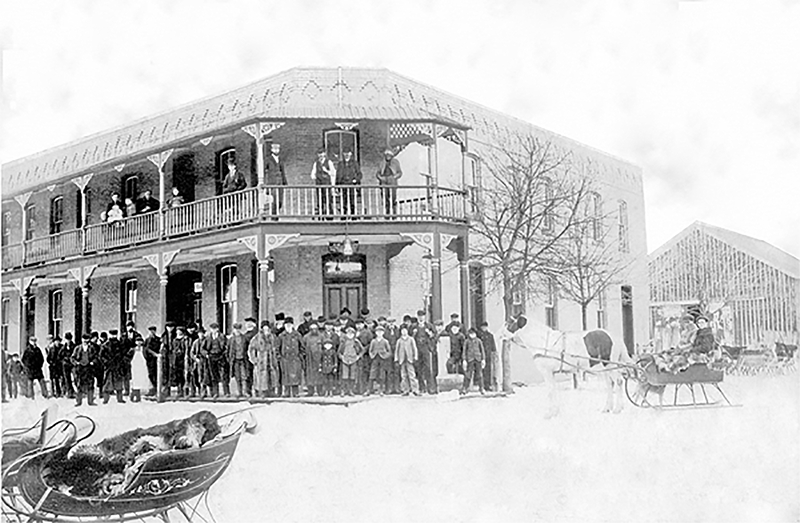

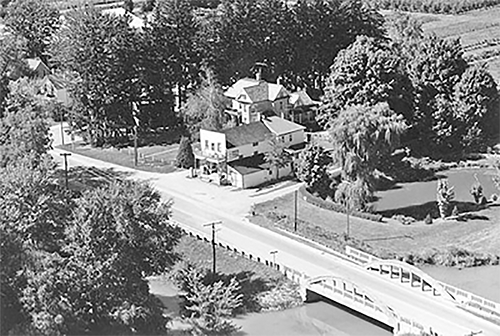
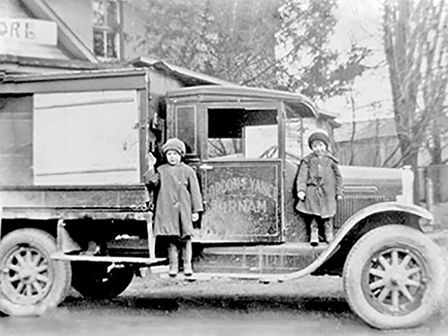
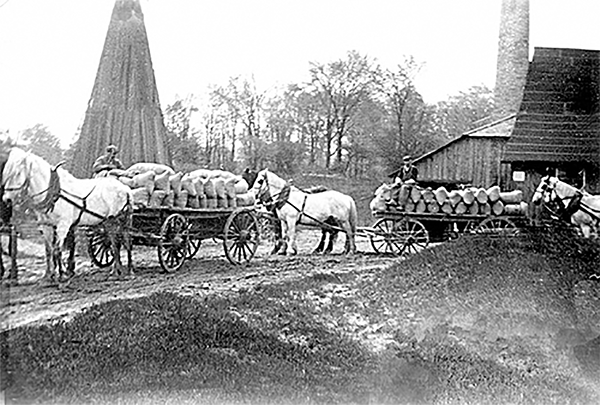


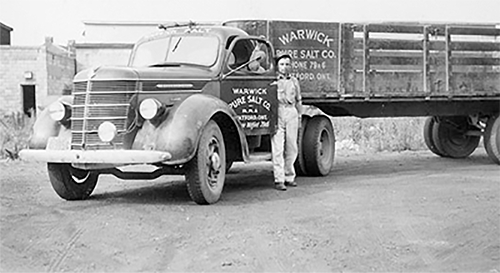
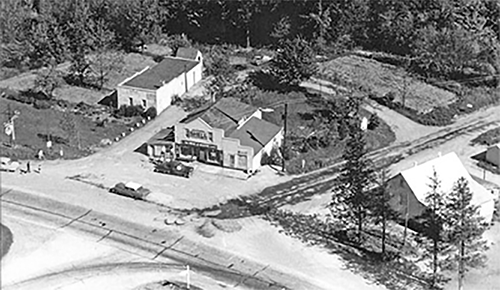

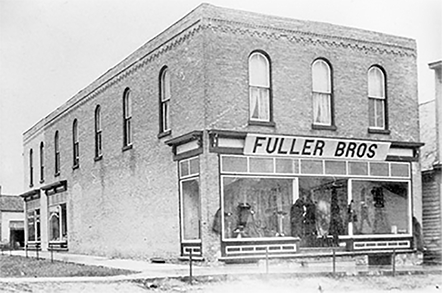
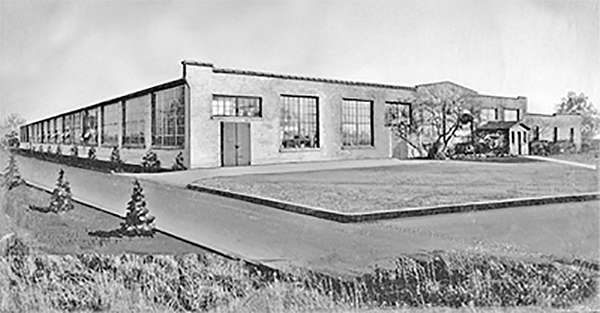
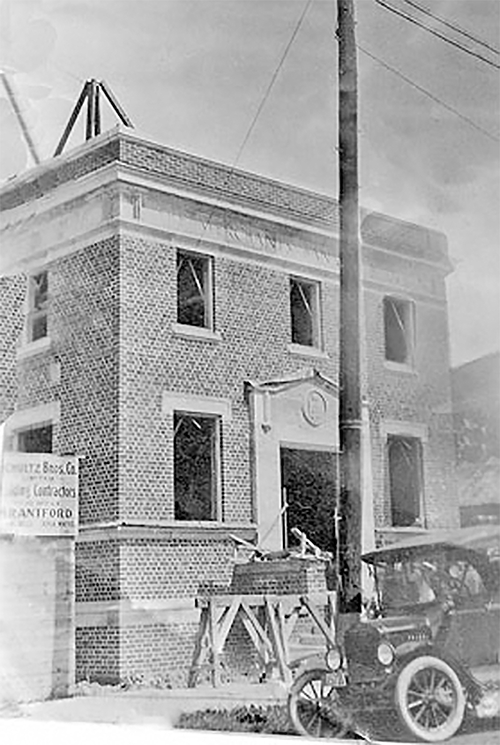
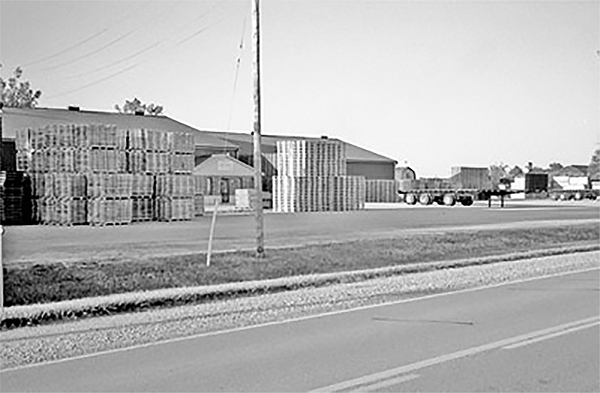
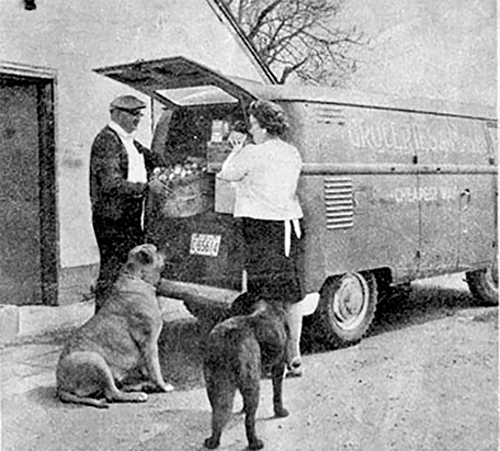
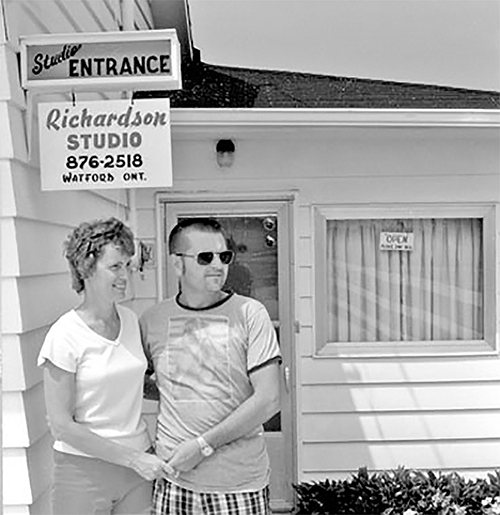
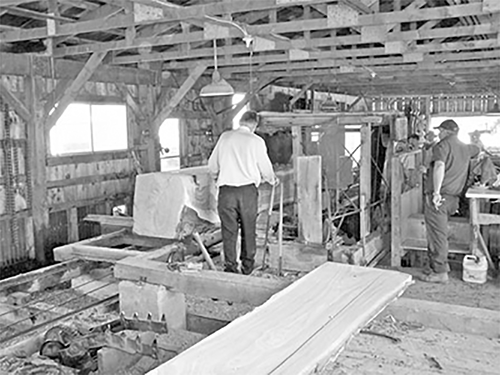
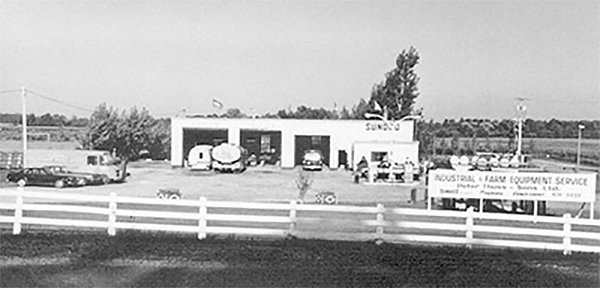
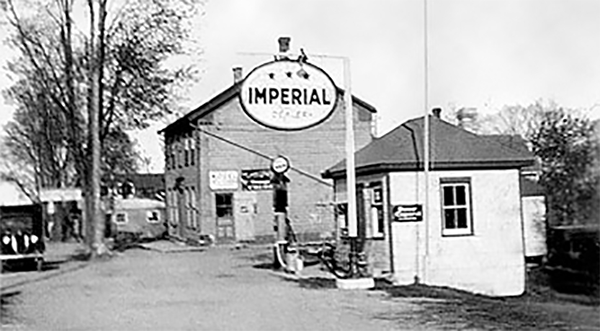
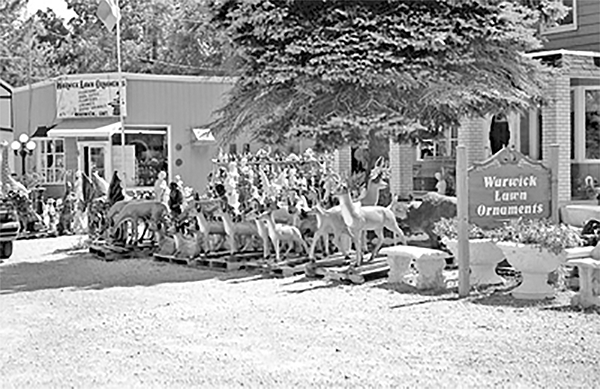
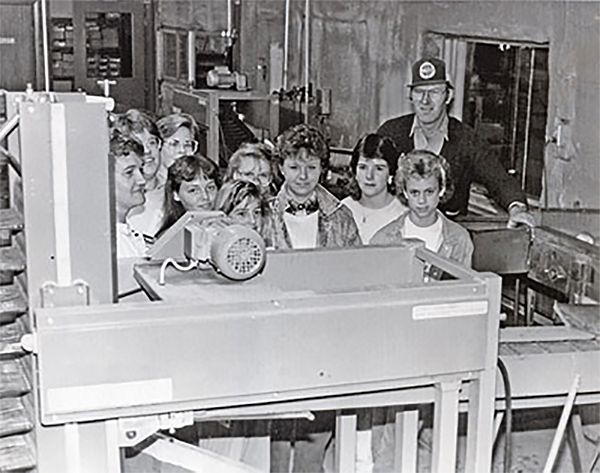
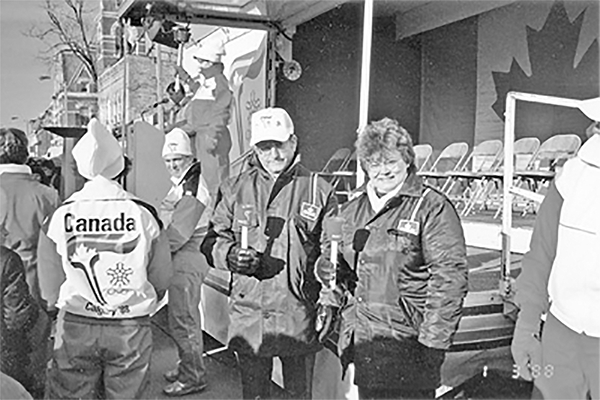
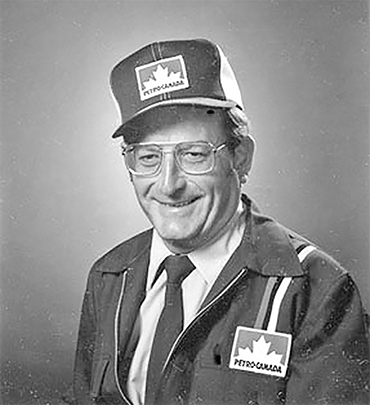
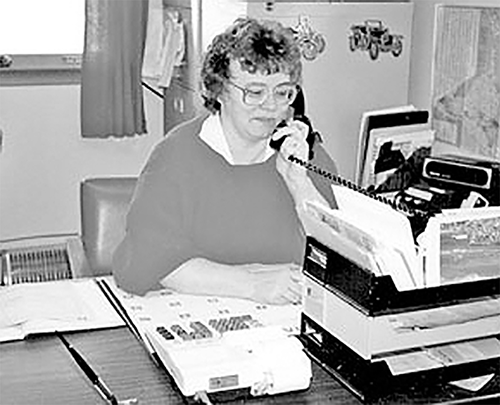
 Subscribe to this page
Subscribe to this page